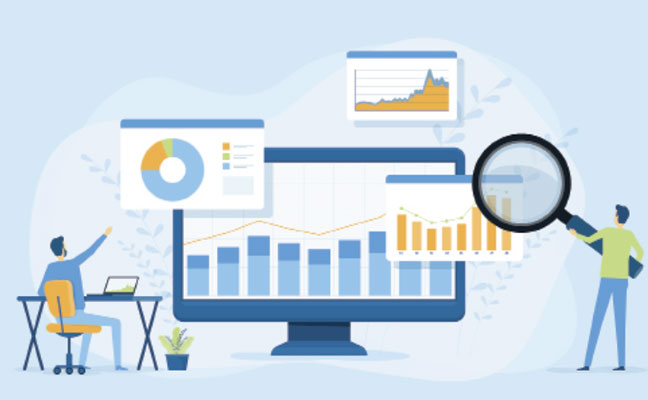
Illustration: TCmake_photo/iStock / Getty Images Plus/Getty Images
Charts, graphs and cool interactive elements are all part of a new age of information reporting that many consultants and accountants — including PCO Bookkeepers — are using to track key performance indicators (KPIs), business trends and financial insights for their clients. These programs allow for the easy interpretation of data.
Problems may arise
But when dashboard software is fed inaccurate information, the programs will generate inaccurate insights and reports. This can lead to several problems, including:
- Poor decision-making. Businesses that rely on dashboard software for decision-making may make poor decisions if the software is fed inaccurate information. Poor business decisions may lead to financial losses, customer dissatisfaction, and operational inefficiencies.
- Misleading information. Dashboard software can be used to generate reports for customers, creditors,
tax authorities and other stakeholders. If the software is fed inaccurate information, these reports also will be inaccurate. This can damage the reputation of the business and may lead to legal liability — as well as tax audits that result in the business paying significant penalties and interest. - Wasted resources. Businesses may waste resources on initiatives that are not effective if they are making decisions based on inaccurate data from dashboard software. For example, a pest management professional (PMP) may invest in additional vehicles, technicians and other expenditures based on inaccurate profit-and-loss (P/L) dashboards produced by bookkeeping performed by inexperienced bookkeepers or those new to the pest control industry.
Accuracy is key
It is important to note that even small inaccuracies in data can have a significant impact on the accuracy of dashboard software, especially as it relates to financial data coming from routing, invoicing and payroll programs.
Here are three steps to ensure data accuracy in dashboard software:
1. Use a trusted source for your data. When it comes to financial data, the information should be produced by a bookkeeper who has expertise in the pest control industry. The financial data should be reviewed by a certified public accountant (CPA) with industry experience and expertise. Before hiring them, drill down on their experience, credentials and knowledge of accounting to produce information on which you base your business decisions.
2. Clean and prepare your data. Before using dashboard software, make sure the data is accurate in your invoicing and routing software. Also, make sure your payroll is journalized properly by division and department. Make sure your balance sheet makes sense, because if it is inaccurate, your P/L also will be inaccurate. Use the reports in your invoicing and routing software program to check the accuracy of the data before importing the information into the dashboard reporting software. You will save time and heartache, and eliminate the need to rerun reports, if you trust the reports produced.
3. Test your dashboards. Once you have created your dashboards, it is important to test them thoroughly. Make sure the dashboards are presenting the information the way you want to see it, with data that is accurate.
Taking these steps can help ensure the data in your dashboard software is accurate and reliable. Doing so will help you make better decisions and improve your overall business performance.
Leave A Comment